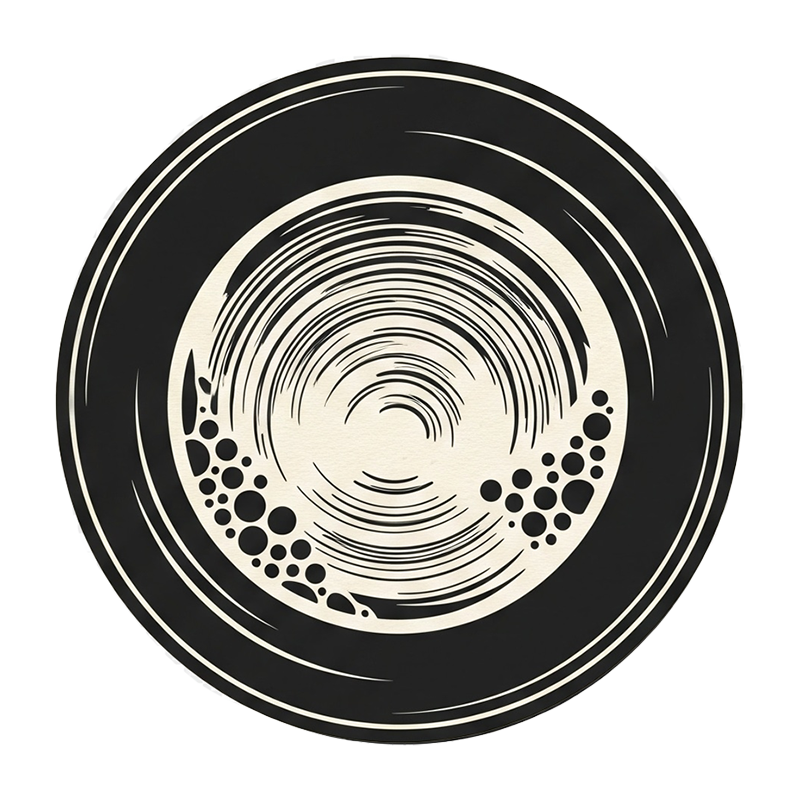Today, matcha is everywhere—in vibrant green lattes, healthy smoothies, and colorful desserts. While it’s celebrated as a modern superfood, its story is anything but new.
To see matcha only as a trend is to miss a rich, thousand-year journey that spans from ancient China to the tranquil monasteries of Japan.
This is the story of how a simple powdered tea became a profound cultural tradition.
The Roots in Song Dynasty China
The practice of powdering tea didn’t begin in Japan. It started in Tang Dynasty China (618–907 CE), where tea leaves were steamed and pressed into bricks for trade. To drink the tea, people would grind a piece into a fine powder—called mo cha (末茶)—and whisk it with hot water in a bowl.
This method was perfected during the Song Dynasty (960–1279), when whipped tea became a celebrated art form. Elaborate tea competitions were held to judge the quality of the froth and the taste of the brew. While this practice would eventually fade in China, it laid the essential groundwork for the tradition we know today.
Across the Sea: Eisai and the Dawn of Zen
In 1191, a Japanese Zen Buddhist monk named Myōan Eisai returned from China with two transformative gifts: the teachings of Rinzai Zen and the seeds and knowledge of powdered tea.
For Eisai, tea was more than a beverage; it was a tool for meditation. The unique combination of caffeine and the amino acid L-theanine provided a calm, focused energy that helped monks stay alert during long hours of sitting meditation. He promoted its benefits in his book, Kissa Yōjōki (“Drinking Tea for Health”), establishing a lasting link between matcha, mindfulness, and well-being. The practice took root first in monasteries, a quiet, contemplative ritual.
Key Terms
- Mo Cha (末茶): The original Chinese term for powdered tea, from which the word “matcha” is derived.
- Chadō (茶道): “The Way of Tea,” the Japanese cultural practice and philosophy surrounding the ceremonial preparation and presentation of matcha.
- Wabi-sabi (侘寂): A central Japanese aesthetic philosophy that finds beauty in imperfection, impermanence, and simplicity.
- Wabi-cha (侘茶): A style of tea ceremony that emphasizes simplicity, rusticness, and humility, developed as a counterpoint to the more opulent tea gatherings of the ruling class.
From Meditation to High Culture: The Samurai and the Way of Tea
From the monasteries, matcha found its way into the world of the samurai. In the Muromachi Period (1336–1573), Japan’s powerful shoguns hosted extravagant tea gatherings to show off their wealth and priceless Chinese tea wares.
But a quieter movement was brewing. Zen monks began to champion a simpler, more rustic style of tea ceremony known as wabi-cha, which found beauty in humility and locally made utensils.
This philosophy was perfected in the 16th century by Sen no Rikyū, the most revered tea master in Japanese history. Serving as the master to a powerful warlord, Rikyū codified the principles of Chadō, or the Way of Tea.
He stripped the ceremony of all non-essentials, focusing on four principles: Harmony (和, wa), Respect (敬, kei), Purity (清, sei), and Tranquility (寂, jaku). By championing the wabi-sabi aesthetic, Rikyū cemented matcha’s place at the very heart of Japanese culture.
A Quiet Tradition to a Global Phenomenon
For centuries, matcha remained a pillar of Japanese culture, largely confined to the tea ceremony. It was a specialized product, cultivated with immense care and prepared with disciplined precision.
It wasn’t until the late 20th century that the rest of the world began to discover what Eisai had known 800 years earlier. Fueled by research into its high antioxidant content and the calming effects of L-theanine, matcha was embraced by a new global wellness culture.
This modern craze brought us the matcha latte and a thousand other culinary creations, introducing millions to a beverage with one of the richest histories in the world.
Conclusion: History in a Bowl
From an emperor’s court to a samurai’s quiet moment of reflection, matcha’s journey is remarkable. Every bowl prepared today connects us to this legacy.
The next time you whisk that vibrant green powder, take a moment. You’re not just making a drink; you’re taking part in a tradition cultivated by monks and masters for nearly a thousand years.
